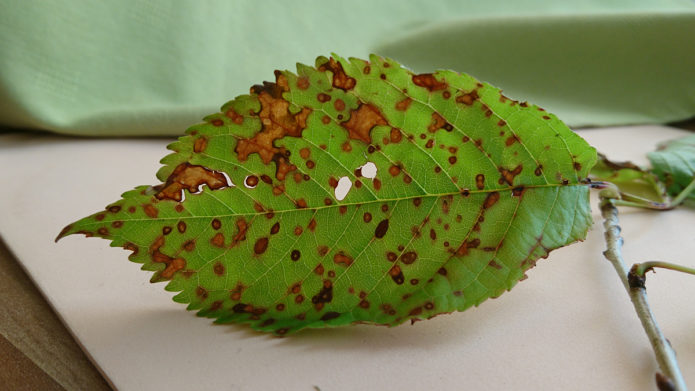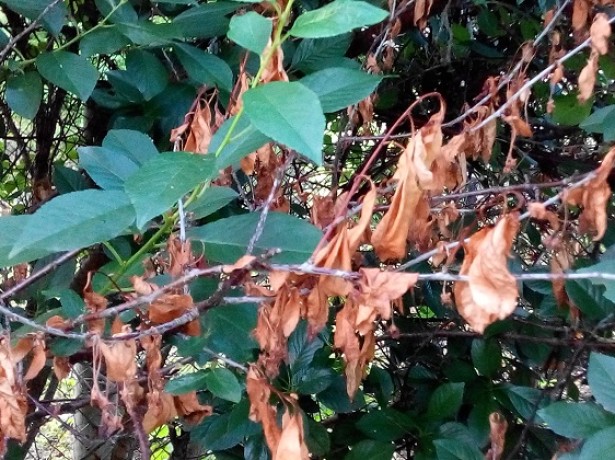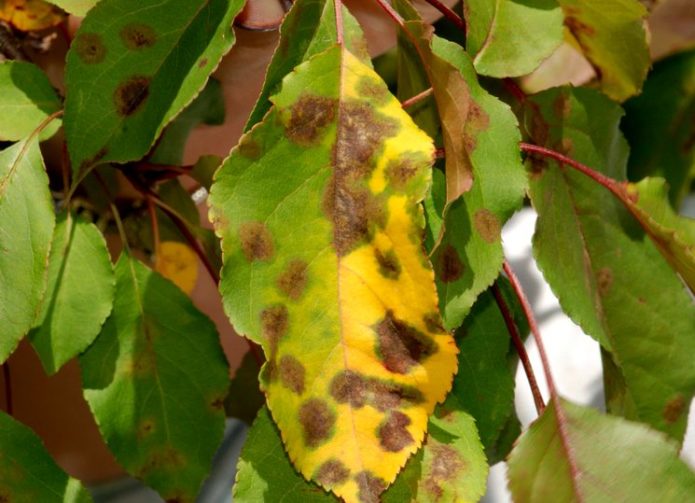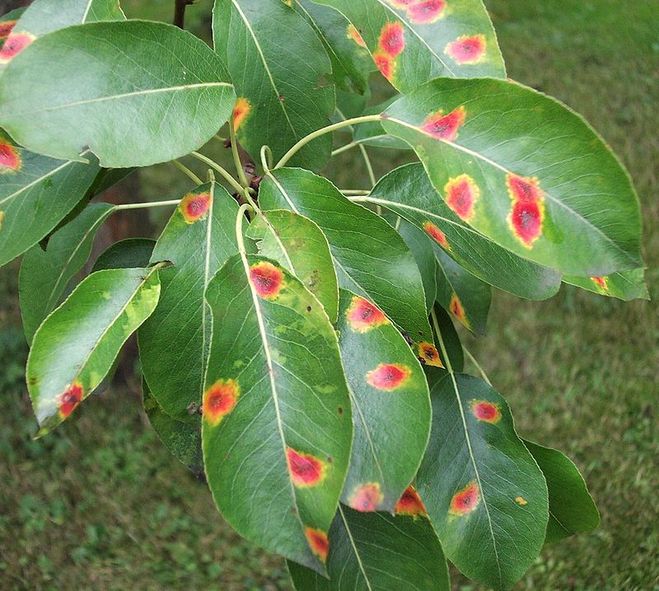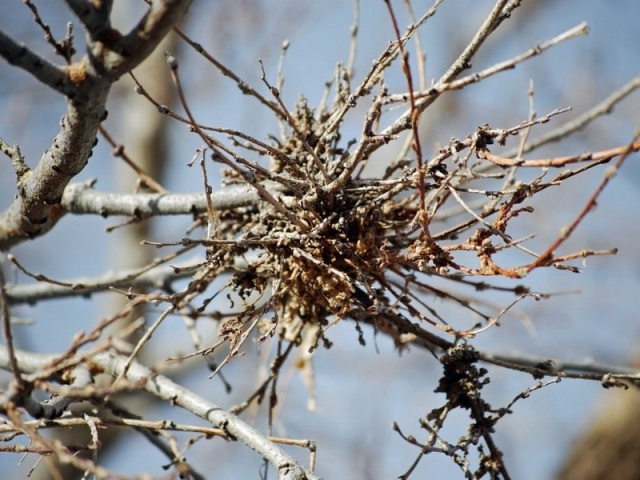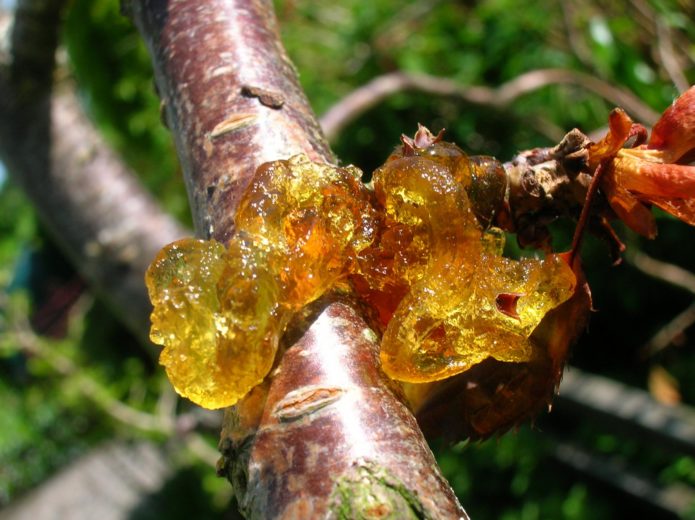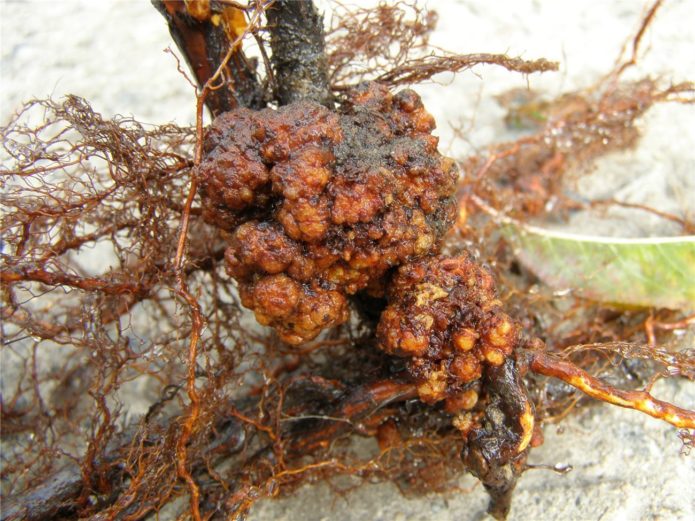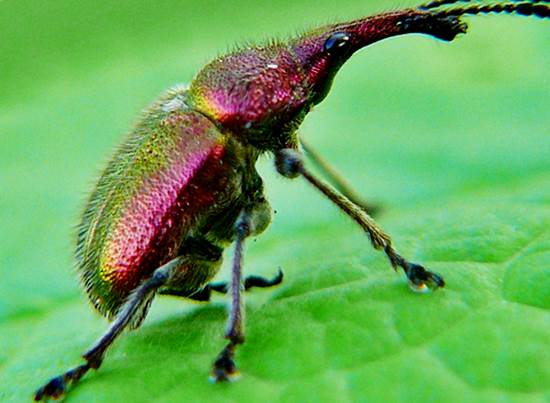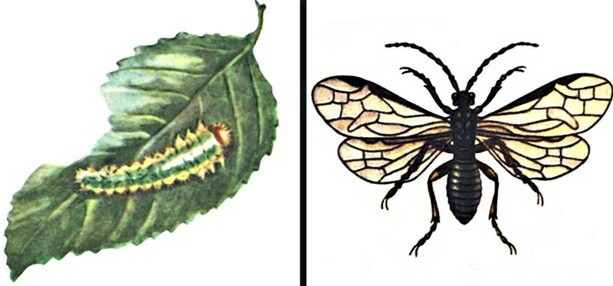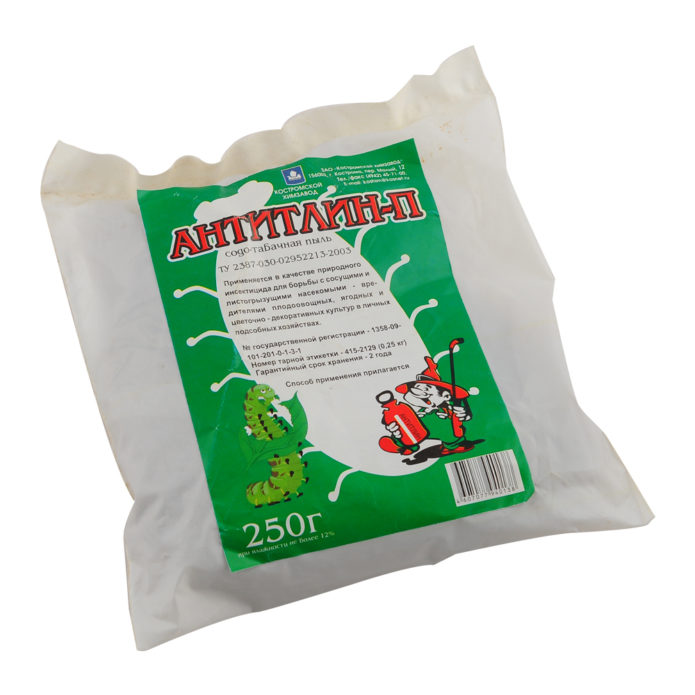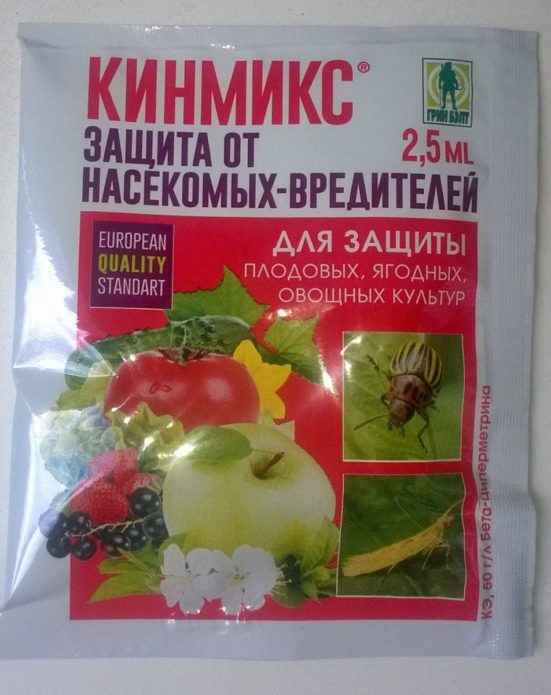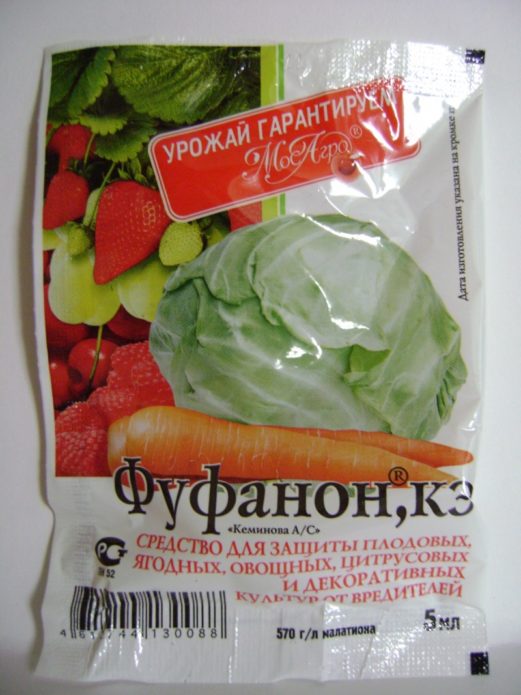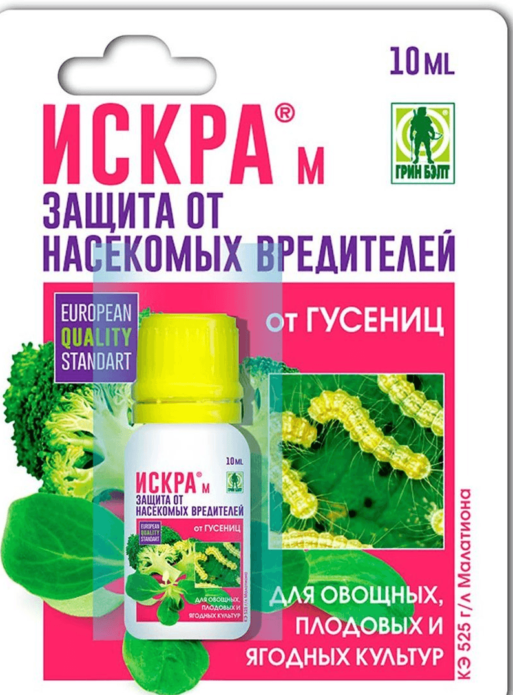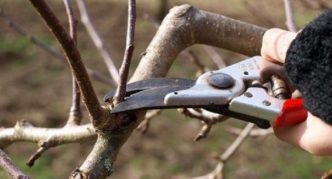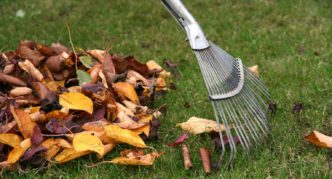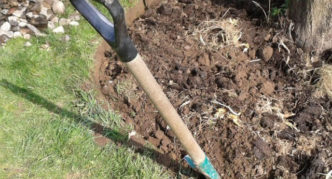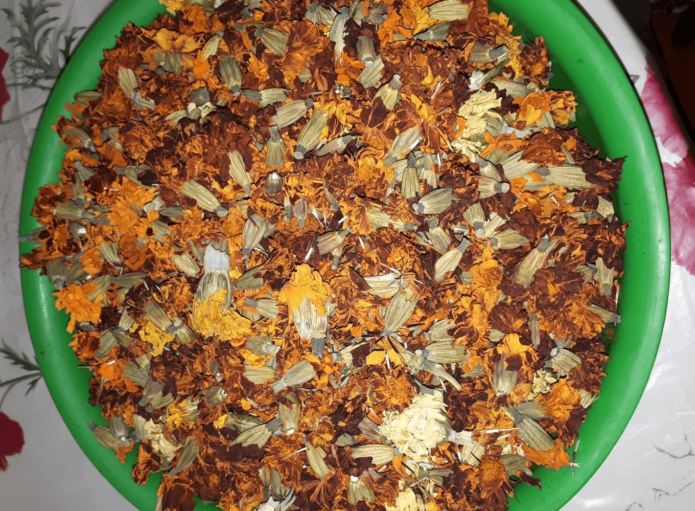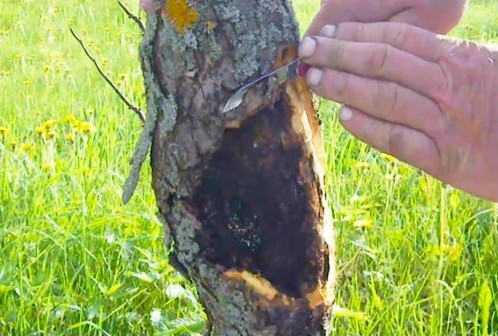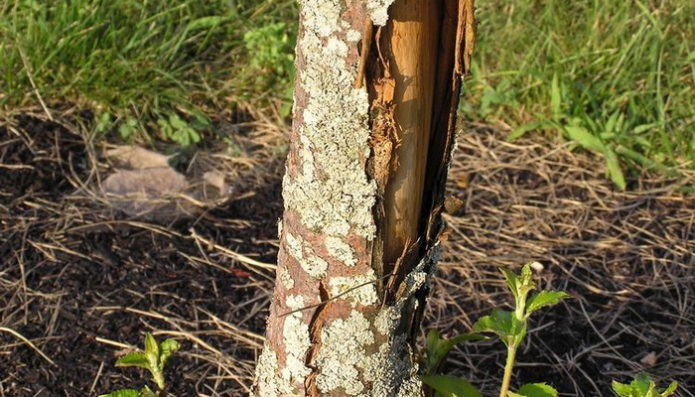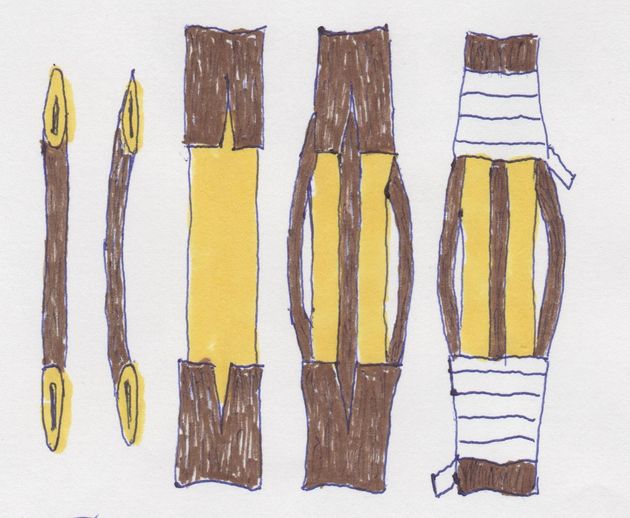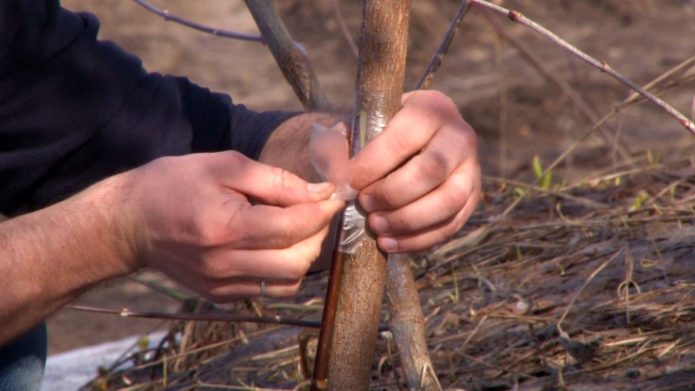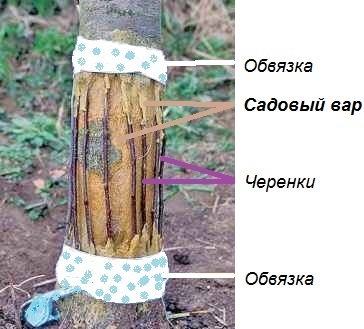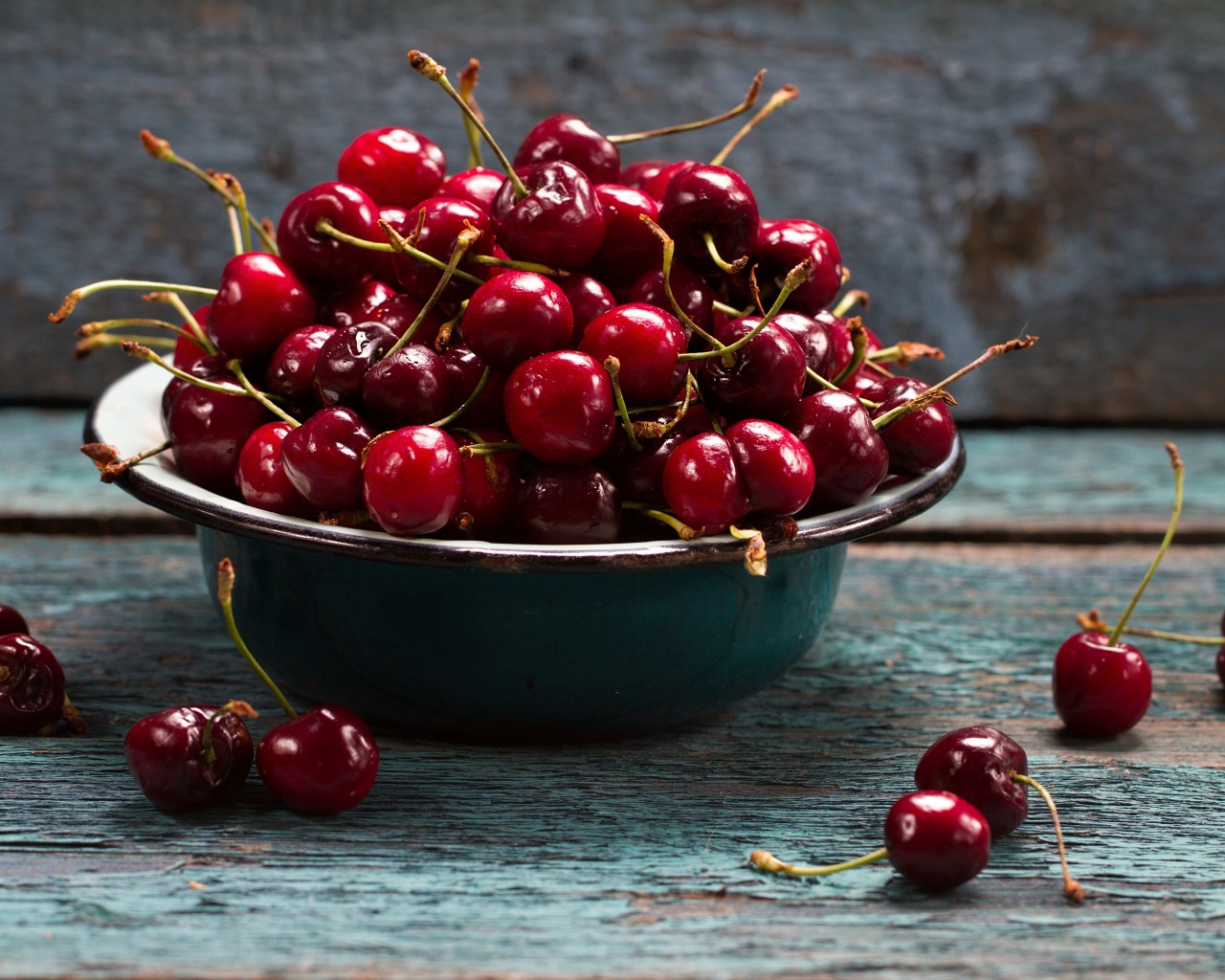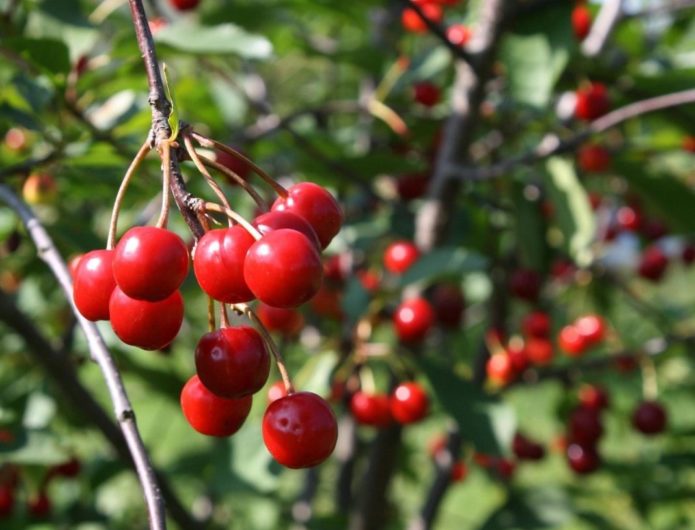Cherry is a valuable fruit crop, fast-growing, winter-hardy, productive, early ripening. Unfortunately, not only people love it, but also insect pests. In addition, cherry trees are often affected by various diseases, while the first signs are noticeable only when the disease has already gained strength. Yellowing of leaves during the growing season, the appearance of black dots, damage to the fruits - all this signals a problem, and which one, let's sort it out together.
Content
Common cherry diseases and their description
Everyone who has seen the cherry blossoms will agree - it is very beautiful: shrouded in snow-white flowers, like a bride in a veil, light and airy. And in the summer, when the ripe berries turn red on it, the cherry becomes so bright that you will not find a tree more beautiful. And we must protect this beauty from numerous diseases.
Clasterosporium disease
Clasterosporium disease is a disease caused by the fungus Clasterosporium carpophilus. Once on a tree, it infects ground parts, including woody shoots. The increased air humidity at low temperatures contributes to the rapid spread of the disease. Outbreaks often occur in early spring, late autumn and winter during thaws. In dry and hot weather, the spread of clasterosporium disease stops.
Signs of infection are clearly visible on all organs of the plant:
- small yellow-brown, rounded spots 1–2 mm in diameter with dark edging form on the leaves. After a short time, the leaf tissue inside the spots dries up and dies off, forming a hole - a hole, which is why the disease received another name - perforated spot. The appearance of holes on the leaves is accompanied by their drying and falling off;
- the infected flowers and buds die off, and a brown coating appears on the fruits, which can destroy them to the bone. Such fruits are deformed, dry out, sometimes you can observe scab-like growths;
- microscopic spots form on the bark of the affected tree, which subsequently grow, and gum begins to flow out of the resulting wound.
Hole spotting inhibits the growth and development of the plant, reduces the yield, degrades the quality of the berries and can completely destroy the tree. For the treatment of clasterosporia, it is necessary to spray the trees:
- in early spring and late autumn - with fungicides Nitrafen, HOM or Bordeaux mixture;
- during the growing season - with the preparations Fitolavin, Skor, Horus, Abiga-peak.
Coccomycosis
The disease caused by the fungus Coccomyces hiemalis is called coccomycosis. High humidity in warm weather is a good breeding ground. In spring and summer, spores of pathogenic fungi are carried through the air and infect all ground parts of trees - leaves, fruits, stalks, green shoots.
The characteristic signs of the disease are clearly visible on the leaves:
- small single red-brown spots, gradually expanding and capturing most of the leaf blade, merge into one large spot;
- on the back of the leaf, you can see a weak fluffy coating - these are the conidiospores of the fungus;
- diseased foliage turns yellow, dies and falls off.
Infected tree organs are sources of infection, and the diseased plant itself weakens, yield and winter hardiness decrease. Spraying trees helps to fight the disease:
- in early spring - drugs that suppress the vital activity of the fungus, such as Nitrafen, HOM or Bordeaux liquid;
- during the growing season - fungicides Mikosan, Fitosporin-M, Fitolavin, Skor, Horus.
Video: how to cure cherries from coccomycosis
Moniliosis
Moniliosis, monilial burn, gray rot - all these are the names of one fungal disease of stone fruits, including cherries. The fungus Monilia cinerea causes the disease. The primary infection of the plant occurs in the spring, during flowering. The spores of the fungus, getting on the pistil of the flower, penetrate the peduncle, germinate into it, and then spread to the leaves and shoots.
The diseased tree looks like it has been on fire:
- the shoots turn brown or brown, the leaves dry out, the fruits that have appeared by that time are covered with a gray bloom;
- cracks appear on the bark, gum flow begins - an influx of sticky substance, which hardens after a few days.
All organs of an infected tree become a source of infection, since new spores of the fungus are well preserved on them. The spread of the disease is facilitated by rainy weather, high air humidity at low temperatures. If you do not take any measures, then the diseased tree will infect all the trees growing in the neighborhood, and itself will die.
Prevention and treatment consists in spraying trees:
- before swelling of the kidneys - fungicides Nitrafen, HOM or Bordeaux liquid;
- during the growing season - with Horus, Skor, Abiga-peak, Fitolavin, Fitosporin-M preparations.
Scab
If bright yellow spots appear on the leaves, which later turn brown and crack, then your cherry is sick with scab, a disease caused by the fungus Karaculiniacerasi. The fungus settles in leaves and fruits. It is not as dangerous for the tree itself as for the future harvest: the affected fruits stop developing and become inedible.
Primary infestation occurs in spring when foliage begins to appear. The spores of the fungus, carried by the wind, adhere to the young leaves and penetrate deep into the plant. When the air warms up above 20 ° C, the fungus activates and spreads through the tree. The causative agent of the disease hibernates in fallen leaves and fruits. Scab treatment is reduced to treating the plant with copper chloride (HOM). The trees are sprayed three times:
- before kidney swelling,
- after flowering,
- after harvest.
Rust
This is a fungal disease of most stone fruit trees. The causative agent is Thekopsora padi Kleb, the main habitat is the cones of coniferous trees, from which the wind and insects transmit the disease to cherries, cherries, bird cherry trees. It is characterized by the appearance of yellow-brown spots on the leaves, resembling rust.
A diseased tree weakens, winter hardiness decreases, yield drops, the leaf flies around. Treating trees before and after flowering with the preparation HOM (copper oxychloride) at the rate of 40 g of powder per 5 liters of water will help to get rid of the disease. Consumption per tree - 2–4 liters, depending on the size of the crown. After harvesting the fruits, you can treat it with a 1% solution of Bordeaux liquid.
Anthracnose
Anthracnose is another fungal disease of cherries. It is dangerous because it affects the berries, remaining unnoticed for a long time. The disease manifests itself in the summer, when the fruits ripen: pinkish tubercles (foci of infection) are formed on them. In dry weather, the tubercles harden, in wet weather they affect all the berries. The berries are mummified and partially fall off.
A diseased tree is treated:
- 1% Bordeaux liquid twice a year, in early spring before the buds swell and in autumn, after leaf fall;
- during the growing season, the drug Poliram is used, the solution is made at the rate of 20 g of the drug per 10 l of water. Spray a diseased tree:
- first time before flowering,
- the second time after flowering,
- the third time 15 days after the second treatment.
Witch's broom
The causative agent of this disease is Taphrina ceraci (Fckl) Sadeb mushroom. In an infected tree, a bunch of thin shoots resembling a broom grows from growth buds. The leaves on such shoots are small and have a yellowish tint. Closer to July, the underside of the leaves is covered with fungal spores. Spores overwinter in cracks in the bark and kidney scales. In the spring, new brooms appear on untreated wood.
An infected tree weakens, loses productivity, and its winter hardiness decreases. Treatment of this disease is reduced to the immediate removal of witch's brooms, burning them and treating trees in early spring, before bud break, with a 1% solution (100 g per 10 l of water) of copper sulfate.
Gum therapy
After mechanical and fungal injuries of the bark from the wounds, an outflow of a sticky substance - gum is observed. Translucent growths are formed around the damage, resembling frozen glue. This phenomenon is called gum flow, in another way - gommosis.
It is not harmless and must be fought with. To prevent gum leakage, you need to be careful when working with wood:
- avoid mechanical injury when pruning and rejuvenating the crown;
- regularly inspect the trunk and skeletal branches, if damage is found:
- clean them, grabbing a little healthy bark around (1.5–2 cm),
- process with a pink solution of potassium permanganate,
- cover with garden pitch;
- prevent sunburn and frost cracks (cracks from frost) of the trunk, whitening the trees at least 2 times a year, in spring and autumn, with garden whitewashing;
- timely identify diseases and treat trees from them.
It happens that the bark does not have time to grow behind a young tree, it bursts, an infection gets into the wounds and gum flow also begins. This can be avoided by furrowing. You need to spend it like this:
- In early spring, make several cuts on the bark along the trunk from all sides with a sharp, disinfected knife, without grabbing the wood.Make incisions in 15–20 cm segments with a distance of 5–6 cm between them from the root collar to the first branch.
- Immediately treat the resulting furrows with a 2% solution of copper sulfate and cover with garden varnish.
In addition to preventing cracking of the bark, furrowing enhances the growth of the trunk in width, which has a positive effect on the amount of harvest in the future.
Video: how to properly furrow
All cuts, furrowing, branch removal, pruning are done only with a disinfected instrument. It can be disinfected in a strong solution of potassium permanganate, in a formalin solution, a 5% solution of copper sulfate, in alcohol, and also by calcining over an open fire.
Root cancer
The disease is dangerous because it is difficult to recognize it in time - it runs underground, it is a bacterial root disease. Infection occurs through the soil. Growths form on the lateral, main roots and root collar. At first they are small and soft, then they grow and harden. By winter, the growths are destroyed, in the spring everything is repeated. Root cancer strongly weakens the plant, impairs its nutrition, and hinders sap flow.
Prevention of the appearance of cancer on the site is a careful examination:
- the roots of seedlings - if suspicious tumor growths are detected, they are removed, capturing part of a healthy root, and the entire root is disinfected with a 1% solution of copper sulfate;
- root collar of young plants - if root cancer is suspected, a young tree is dug up, tumor growths are cut to a healthy tissue, treated like a seedling, planted in another place, after disinfecting the soil with a pink solution of potassium permanganate.
Mature trees will not heal.
Preparations for the treatment of cherries from fungal diseases and methods of their use
Various drugs are used to treat diseases caused by fungi. They are called fungicides (chemical or biological agents that inhibit the growth of fungi). There are also systemic drugs that combine several actions.
Table: some drugs for the treatment of cherry fungal diseases
| Name | What is | How to use | Cooking recipe and doses | The danger |
| Nitrafen | An insecticide with fungicidal properties, is a 60% dark brown paste with a pungent odor of carbolic acid | It is used in the early spring period for spraying cherries against the wintering phases of pathogens, insects and herbivorous mites (including their eggs and pupae). And also used against various leaf spots, mosses, lichens, scab, curl | 3% solution - 300 ml of the drug is dissolved in 10 l of water. 2-5 liters of working solution are consumed per tree, depending on the size of the crown | Due to the fact that the drug has a detrimental effect on the green mass of the plant, it is used in early spring, before the buds swell, and in late autumn, after leaf fall. The closed buds and bark of trees are not damaged by it |
| HOM (copper oxychloride) | Contact fungicide | Protects plants from diseases, pests, weeds, as well as from the consequences of their vital activity | 40 g of the drug is first diluted in a small amount of water, after complete dissolution, more water is added, bringing the volume of liquid to 10 liters. Spraying trees should be carried out in calm weather with an air temperature of no more than +30 ° C, trying to evenly wet the surface of the leaves. The working solution must be used on the day of preparation. The period of the protective action of the fungicide lasts from 10 to 14 days, while the resistance of pathogens to copper oxychloride does not arise | The drug is ecologically safe, within a short time it is completely decomposed by soil microorganisms, leaving no traces of chemistry. To prevent the accumulation of the active substance in the fruit, the treatment is stopped 20 days before harvest. Hazard class 3 |
| Speed | A systemic drug that is used to prevent and treat various fungal plant diseases | Effective in the fight against coccomycosis, clusterosporia, leaf curl | Dilute the drug at the rate of 2 ml per 10 l of water. As a prophylaxis of diseases, two sprays must be carried out before flowering and two after flowering:
As a treatment, spraying is carried out as soon as symptoms of the disease are detected. | Non-phytotoxic subject to consumption rates |
| Horus | Fungicide of a wide penetrating systemic and contact spectrum of action | Effective at low temperatures (+5 ° C). Effective against various types of cherry rot, against scab, powdery mildew, moniliosis, clasterosporium, coccomycosis and other fungal diseases of stone fruit | Begins to act in 2-3 hours after treatment. The trees are sprayed with a 3% solution (dilute 3 g of the drug in 10 liters of water). Carry out processing twice:
The consumption rate per tree depends on the size of the crown and ranges from 2 to 5 liters. At high temperatures (+22 ° C and above), the beneficial effect of the drug decreases. In this case, it is necessary to use fungicides that are effective in warm weather, for example, Skor | It does not have a toxic effect on bees and other insects living on the site. Not phytotoxic |
| Abiga Peak | A universal preparation of contact action for combating fungal and bacterial diseases of cherries |
| You can carry out up to 4 treatments:
| Subject to consumption rates, it is not phytotoxic. Low toxicity for humans and animals (||| hazard class), low hazard for bees, fish, earthworms. Does not penetrate the fruit, does not form toxic compounds |
| Mikosan | A unique biological preparation with a highly effective protective fungicidal action | Protects cherries from fungi, bacteria and viruses. The mechanism of action is the penetration of fungi into plant cells and the destruction of cells with pathogens affected by pathogens. 2 types of drug are used:
| Dilute the contents of a bottle of Mikosan B (100 ml) in 8 liters of water. Spray cherries with working solution before or at the initial stages of disease development | There are no restrictions on processing during the growth period and the number of sprays. No negative effect on the soil microflora of earthworms, bees and other beneficial pollinating insects, as well as predatory insects that destroy pests, has been established. Can be used during flowering and fruiting |
| Fitosporin-M | Biofungicide is one of the most popular environmentally friendly bacterial fungicides based on the natural bacterial culture of Bacillus subtilis on a humic carrier | Effective against a wide range of fungal and bacterial diseases of cherry, including scab, wilting.Contains immunostimulating and anti-stress substances that significantly reduce the risk of re-infection and increase growth | Dissolve 100 g of the paste in 1 glass (200 ml) of water. The resulting stock solution can be used throughout the season. For spraying plants 2-3 teaspoons of the stock solution are diluted in 10 liters of water. The plant is sprayed during the growing season with an interval of 10-15 days | There is no waiting period (processed products can be consumed on the day of processing). Not phytotoxic, hazard class for humans and animals 4, for bees 3 |
| Fitolavin | Systemic preparation of natural origin for combating bacterial and fungal plant diseases (root rot, bacterial cancer, apical rot, moniliosis, scab, anthracnose) | It is used for the prevention and treatment of diseases of fruit trees. Has a pronounced bactericidal and fungicidal action of a wide spectrum. Has a stimulating effect on the growth and development of trees | The working solution is prepared immediately before spraying. The dilution standard is 2 ml per 10 liters of water, in two steps:
Cherries are sprayed no more than four times, starting treatment to budding with a 7-14 day cycle. The period of protective action is 15-20 days | There is no phytotoxicity in the recommended consumption rates. Short waiting time (1–2 days). Low hazard for bees and other beneficial insects |
Treating trees with fungicides must be carried out using personal protective equipment - gloves, respirators, goggles, overalls.
Cherry pests
Some insects can harm the tree no less than disease, so it is necessary to recognize and destroy them in time.
Cherry weevil
Cherry weevil (elephant) is a dangerous pest of fruit trees, settles on cherries and other stone fruit crops, feeds on flowers, berries and buds. Irreparable damage to the crop is caused not only by itself, but also by its larvae. It hibernates underground in the adult stage. It comes out of the soil in spring, during the ripening of the buds.
The female beetle lays one egg in the pericarp, the hatched larva settles in the bone, gnawing it out. The grown larva descends into the soil for pupation and further development, and after the transition to the adult stage, it remains in the soil until the next spring. Due to the mass reproduction of the cherry elephant, there is a significant loss of yield, foliage falling, as a result of which the entire tree may die.
Control measures:
- autumn and spring (before bud swelling) digging of near-trunk circles with a full rotation of the layer, removal of damaged bark and whitening of trees;
- shaking off beetles from branches after emerging from the soil. It is advisable to do this in cool weather, when their activity is low and they easily fall off the branches onto a film spread under the tree;
- spraying tree crowns and trunks with permethrin-based pest control preparations - Rovikurt, Kinmiks.
Cherry aphid
Small black insect, pest of cherry and cherry crops. When settling on trees, it damages young green shoots and leaves. With a large infection, it affects the fruits, leaving waste products on them, reducing the presentation and quality of the crop. The affected shoots lose their elasticity, the leaves curl, dry out and die off.
When aphids are found:
- dried shoots are cut out;
- remove tops (useless idle shoots growing vertically), root shoots;
- trees are sprayed with pesticides Antitlin, Kinmiks, Fufanon-Nova.
Pale-footed cherry sawfly
Another name for the pale-footed cherry sawfly is the gooseberry sawfly, a pest of berry and stone fruit crops.It hibernates underground in the larval stage; pupation and emergence of an adult insect begin in early spring. An adult female beetle lays several eggs on the back of the leaf near the central vein, covering them with a kind of film.
After 8-9 days, larvae are born from them. They do the greatest harm to the tree, gnawing many small holes with even edges in the leaves. In case of danger, the larvae curl up into a ring and fall to the ground. In summer, they pupate among the leaves or in the bark, and during the growing season they pass several life cycles, and at the same time you can see different stages of the insect's development.
The fight in personal plots is reduced to the following measures:
- digging up near-trunk circles;
- shaking off the larvae on the ground covered with a film or other material, followed by their destruction;
- by spraying during the growing season with pesticides Iskra M, Kinmiks, Akarin, Bitoxibacillin.
Black cherry weevil
It is a black oblong beetle with a short body, a pest of cherry crops. The larvae settle under the bark and feed on wood, making winding passages in it, like a bark beetle, and adult beetles eat up the leaf between the veins. The weevil damages the tree by causing the branches to dry out.
The fight is conducted in this way:
- shake the beetle off the branches in the morning, when it is not yet active, onto the material laid under the crown with subsequent destruction;
- spray the crown and trunk with the biological pesticide Fufanon-Nova.
Cherry fly
It is a small insect 3–5 mm long, its abdomen is black, the back and front of the head are orange, there are four black stripes on transparent wings. It hibernates underground in the pupal stage; in spring it comes to the surface. After mating, the female lays eggs in green and ripe fruits. The hatched larva feeds on the pulp of the fruit, damaging them, thereby causing great harm to the crop.
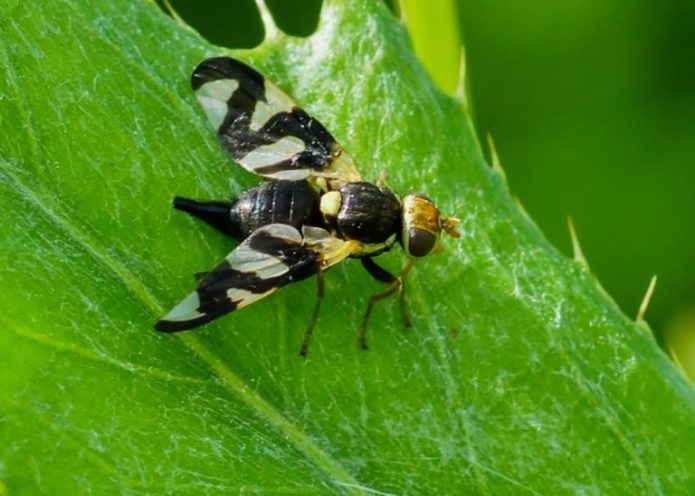
The cherry fly larva eats away the fruit from the inside, which causes great harm to the cherry crop
Pest control methods:
- digging up near-trunk circles;
- spraying the tree with Fufanon-Nova pesticide, insecticides Ditox, Tsiperus.
American white butterfly
A dangerous quarantine pest that grows on all fruit trees, including cherries. Hibernates underground in the pupal stage. In the spring, when a warm temperature (not lower than +8 ° C) is established, butterflies emerge from the pupae, mate during the day, and after a few hours they lay eggs on the back of the leaf. After hatching, caterpillars begin to actively devour leaves and build nests from them. The developed caterpillars of the spring generation pupate in the crown on leaves, the summer generation pupates in the ground.
In Russia, it is found in the southern regions.
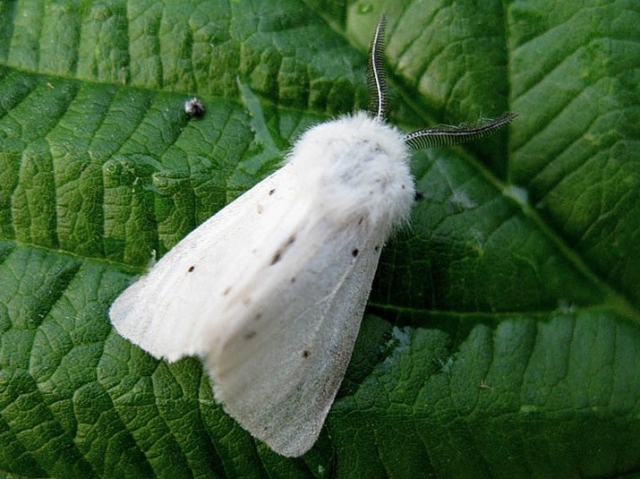
The American white butterfly is a very dangerous quarantine moth, although it looks white and fluffy
Pest control methods:
- digging of near-trunk circles;
- cleansing the trunk from peeling bark with wound treatment;
- whitewashing a tree trunk with a composition of lime, clay and copper sulfate (see proportions below);
- pruning and destruction of pest nests;
- timely spraying of trees during the growing season using pesticides Gerold, Karate Zeon, Lepidocid, Bitoxibacillin.
Garden ants
Garden ants are not considered dangerous pests, but they bring trouble by bringing aphids to the tree. To prevent ants, use the drug Muravyin. It is scattered in the near-barrel circle at the rate of 3 g per 1 sq. m.
Insecticides approved for use on cherries
There are a lot of insecticides (preparations against insect pests), we will consider only the most common ones.
Antitlin
This vegetable insecticide is used to control garden pests and is a mixture of tobacco dust (75%), soda ash (10%) and water.This solution is sprayed with cherries during the growing season against aphids, thrips, openly living caterpillars, leaf-eating pests before and after flowering at the rate of 500 g per 10 liters of water. Spraying is carried out in dry calm weather in the morning or evening.
Bitoxibacillin
It is a biological insecticidal preparation designed to protect agricultural, flower, forest and medicinal crops from insect pests.
Benefits of Bitoxibacillin:
- effective against lepidoptera, spider mites and Colorado potato beetle larvae;
- does not possess phytotoxicity, does not accumulate in plants and fruits;
- guarantees the receipt of environmentally friendly, healthy products;
- applies to any phase of plant development;
- a waiting period of five days, which allows processing shortly before harvest;
- compatible in tank mixes with chemical pesticides and biological agents;
- when used in the recommended consumption rates, it is safe for humans, warm-blooded animals, fish, bees and predatory insects that eat other pests.
Rovikurt
This preparation of intestinal and contact action is a light yellow oily liquid. It is produced in the form of a 25% emulsion concentrate, used normally 10 g per 10 l of water. Recommended for the control of many gnawing and sucking cherry pests. The waiting period is 20 days, the frequency of cherry processing is 1 time.
Kinmix
This insecticide with a contact-intestinal action is used to combat the sucking and gnawing pests of cherries. The active ingredient is beta-cypermethrin at a concentration of 50 g / l.
To obtain a working solution:
- One ampoule of Kinmix (2.5 ml) is first diluted in a small volume of water.
- Then mix thoroughly.
- Bring the volume of the solution to 10 liters.
Plants are sprayed during the growing season with a freshly prepared solution in dry, calm weather, preferably in the morning or evening, evenly wetting the leaves. The working solution cannot be stored. The exposure rate is within 1 hour after application. The period of protective action is within 14–21 days, depending on weather conditions and the object being processed.
Fufanon
Insecticide of contact-intestinal action works against whitefly, whitefly, gall midge, weevil, ticks, leafworms, false scutes, honeydews, moths, flies, fireflies, sawflies, moths, moths, scoops, aphids, thrips and other insects. The active ingredient is malathion.
Method of application: the contents of the ampoule (5 ml of the drug) are diluted in 5 liters of water. The period of protective action is from 3 to 15 days. Compatible with all drugs except Bordeaux liquid.
Iskra M
It is a contact-intestinal insecticide against sucking and gnawing insects.
Benefits:
- destroys aphids, thrips, leafhoppers, bedbugs, herbivorous mites, perfectly suppresses caterpillars and sawfly larvae, is successfully used against locusts;
- has a long period of protective action;
- effective against pests resistant to pyrethroid (neurotoxic) insecticides.
Insecticide Iskra M is used for spraying plants during the growing season when insects appear. The death of the pest occurs in the interval from 30 minutes to 2 hours. 1-2 treatments are carried out per season.
The period of protective action is at least 14 days. In recommended doses it has low phytotoxicity for horticultural crops.
Now is the time for the first preventive treatments of trees in the garden from insect pests of fruit crops.This is the so-called green cone treatment - when the buds opened the outer scales and the leaves began to appear, still twisted into a cone. This time just coincides with the average temperatures, when the awakening of the main pests of this period is about to begin: these are aphids, honeyweed, weevils, some caterpillars (hawthorn). I usually use Fufanon with the active ingredient matalion. The substance is a nerve agent for insects, and our grandmothers remember its name as Karbofos. I use it, although there are a lot of more modern pyrethroid drugs on the market. The main reason is that there is little poison that acts at low temperatures, and Fufanon at average temperatures of +5 degrees. You get the idea - everything else just won't work.
General recommendations for the treatment of cherries from diseases and pests
To prevent pests and diseases from infecting cherry trees, preventive measures or treatment should be carried out throughout the growing season - start even before the buds swell and finish after the leaves fall. In each period, you can use any of the drugs indicated in the table.
Table: recommendations for treating trees from diseases and pests, depending on the season
| Time of processing | purpose | Drugs used |
| Early spring, before the buds swell, "Blue spraying" | Eradication treatment against broad spectrum fungal diseases, bacterial infections and pests hibernating in the bark | Nitrafen, HOM, Bordeaux mixture |
| The beginning of the appearance of leaves, phase "green cone" | Prevention against all types of spots, scab, aphids, mites | Fitolavin, Abiga-peak, Kinmiks, Skor |
| Before flowering, phase "rose bud" | Prevention of a number of fungal diseases, insect extermination | Skor, Abiga-peak, Bitoxibacillin, Fitosporin-M, Fufanon-Nova |
| After flowering, during the formation of ovaries | Prevention of fungal diseases, destruction of pests | Fitosporin-M, Fitolavin, Bitoxibacillin |
| After falling leaves, "Blue spraying" | Destruction of fungal pathogens diseases and pests hibernating in the bark | Nitrafen, HOM, Bordeaux mixture |
Preventive work in the garden against diseases and pests
In order to prevent the development of diseases and the invasion of pests, not to rescue a diseased tree, it is necessary to carry out preventive work throughout the horticultural season:
- digging up near-trunk circles with the destruction of root shoots. The diameter of the circle depends on the size of the crown, for an adult tree it should be at least 2 m;
- whitewashing the tree trunk, including skeletal branches, with lime with the addition of clay, manure and copper sulfate. It is carried out in early spring and late autumn, its purpose is to protect trees from various diseases, insects, sunburn and frostbites. Ready-made whitewash can be purchased in the store, or you can prepare it yourself: 2 kg of clay, 2 kg of slaked lime, 200 g of copper sulfate, dilute with water and mix well until the consistency of kefir. Apply the prepared mixture to the tree trunk and skeletal branches, after cleaning the bark from dead particles and disinfecting it with a pink solution of potassium permanganate. To avoid burning the bark, copper sulfate is not added to the whitewash for young trees and seedlings;
- collection of loose leaves, fallen and affected fruits left on the tree, followed by their burning outside the garden;
- timely removal of dry, affected branches, as well as branches directed into the crown. After pruning, the cut site should be treated with garden varnish, enamel or oil paint;
- gum wound treatment:
- It is cleaned, capturing at least 2 cm of healthy bark around.
- Disinfect with a 1% solution of copper sulfate or a pink solution of potassium permanganate.
- Garden var is applied;
- regular inspection of the trunk and skeletal branches.If new cracks in the bark are found, they are disinfected and covered with garden varnish, as mentioned above.
Fruits, foliage, branches and bark scraps affected by fungal diseases and pests are not put into compost, they can only be burned!
Photo gallery: compulsory preventive work in the garden
- Whitening the stem will protect cherries from sunburn and frost damage
- Timely pruning of the thickened crown of cherries is a good prevention against various diseases
- It is important to collect dry leaves around the trunk of the cherry, as pests can hibernate in them
- Digging the trunk circle will destroy some of the pests wintering near the cherry
Folk remedies in the fight against pests of cherries
Unfortunately, there are no folk remedies for the treatment of fungal and bacterial infections of cherries, but you can scare away insects that contribute to their spread.
Plant repellents
Many pests cannot stand the smell of plants such as calendula, mint, lemon balm, tansy, wormwood, hyssop, onion, and garlic. To scare away, you can plant these plants in the immediate vicinity of the cherry. For example, low-growing marigolds or calendula planted in near-trunk circles will not only decorate the tree, but also create additional protection from insects. Here are some of the repellent plants:
- mint repels whiteflies and ants;
- ants don't like lemon balm;
- tansy can be used to protect against suckers, caterpillars and moths;
- Yarrow is feared by aphids, thrips and small caterpillars.
There are several recipes that gardeners use with success:
- mustard infusion (10 g of dry mustard pour 1 liter of hot water (+60 ° C), leave for two days, and then strain) is used against red apple mites, aphids, sawflies, scoop caterpillars, white flies and other pests;
- infusion of marigolds (pour 15 cups of dry crushed marigold flowers in 8 liters of boiling water, add 20 g of laundry soap previously grated on a coarse grater, mix, leave for 24 hours)
used to combat aphids, gall nematodes, ticks. Spraying with infusion is carried out 2 times a week, preferably in the morning. Processing is stopped 10 days before harvest; - dandelion infusion (mix 200 g of chopped leaves and 150 g of dandelion roots, pour 10 liters of boiling water, leave for at least 2 hours, strain) is used to combat pests of fruit trees. The first treatment is carried out as soon as the buds bloom, the second - immediately after the flowering of crops, and the subsequent ones - after 15–20 days;
- infusion of chamomile and laundry soap (mix 860 g of dried and thoroughly crushed grass and 140 g of chamomile inflorescences, pour 10 liters of warm water, leave for a day, strain; then dilute 15 liters of water, dissolve in the infusion 15 g of household grated on a coarse grater soap) is used to combat spider mites, sawfly larvae, caterpillars and aphids. Spraying is carried out 3 times a week with a break. Processing is stopped 2 weeks before harvest.
Hunting belt
A hunting belt (a device in the form of a strip 15–20 cm wide made of various materials) is used to control insects that fall on the cherry tree along the trunk and branches. There are several types of fishing belts, but the principle is the same for all. The belt is made in this way:
- The trunk of the tree is wrapped in a strip of dense fleecy fabric (like a bike).
- The top of the strip is fixed with a rope, narrow foil or tape so that there are no gaps between the wood and the fabric. If necessary, this part of the trunk can be coated with clay beforehand.
- The lower part of the fabric remains hanging in the form of a skirt. Insects cram under the fabric.
- Once a week, the belt is removed, the insects are shaken out of it onto the spread fabric and destroyed.
Opponents of this method argue that along with ants and crawling pests, a large number of beneficial insects die.
Video: how to make a trapping belt with your own hands
Clay and cling film for cambium recovery
In the spring, after the snow melts on the tree trunk, you can observe the islets of gnawed bark. On summer cottages or backyards, these can be mice or hares. Mice gnaw the bark shallowly with a narrow ring, while the cambium (the educational tissue between wood and bark) is not affected. As long as the cambium is alive, the tree is alive. It heals wounds, builds up wood and bark.
If the bark is damaged by mice, you need to make sure that they have not reached the cambium and that it is alive, that is, it has not dried up. After that, they act in this way:
- The edges of the bark are carefully cleaned, treated with a pink solution of potassium permanganate.
- Then close the wound with cling film and fix it with adhesive tape.
- With a deeper damage to the bark, the wound is treated in the same way, it is well coated with a dough of clay and water, and wrapped with cling film.
- If the bark is destroyed in a ring, and the cambium has not yet dried, the method of salvation is the same - processing, clay, winding. The cambium under the clay will begin its work and restore the bark.
Bridge grafting
If the cherry bark is damaged by more than half the diameter of the trunk, and the cambium has already dried up, you can try to save the tree by installing bridges from bark to bark through the damaged places. The method is called "grafting with a bridge" and is used to restore the sap flow of the tree. The procedure is as follows:
- In early spring, before the start of sap flow, cuttings are harvested (any tree will do) and stored in a cool place in damp sand. Their length should be 15–20 cm longer than the damaged area, and their thickness should be 4–6 mm.
- Before treatment, the damaged area on the bark is treated with garden putty.
- In May, with the beginning of sap flow, cuttings are taken out, examined, spoiled ones are discarded, healthy ones are kept at room temperature until they are completely warmed up. The kidneys break out.
- The damaged area is carefully cleaned, wiped with a damp cloth, the bark is trimmed. On the cuttings, an oblique cut 5–6 cm long is made on both sides so that it looks in one direction. Be sure to determine the top and bottom of the cutting, it is important not to confuse: the bottom of the cutting is grafted to the bottom of the bark, top to top.
- Paired vertical incisions are made on the bark above and below the edge so that the upper incision is strictly above the lower one. Their number depends on the thickness of the trunk and harvested cuttings.
- Cuttings are inserted into these cuts with a cut to the wood.
- Vaccination sites are fixed very tightly. You can use scotch tape, electrical tape, medical adhesive plaster, but secure with a sticky layer outward.
- Open places are treated with garden pitch.
- During the summer, all shoots are removed from the cuttings.
As far as I understand, this is an author's addition, it needs to be highlighted Some gardeners recommend heavy pruning of the crown after grafting with a bridge to conserve moisture. I am against this method. Any pruning, even for a healthy tree, is stressful, and a strong one will also provoke the growth of tops - a weakened tree does not need it.
Some problems of healthy cherries
Sometimes, even in the absence of diseases and pests, a seemingly healthy cherry tree blooms, but does not bear fruit, that is, it does not fulfill its main task. With abundant flowering, the lack of fruit is due to several reasons:
- self-infertility of the variety.Cherry trees are divided into three categories - self-fertile (more than 20% of flowers are pollinated with their own pollen), partially self-fertile (up to 18% of flowers are pollinated with their own pollen) and self-fertile, which do not bear fruit without a pollinator. The pollinator is a self-fertile cherry of a different variety, planted nearby and blooming at the same time as the pollinated one. For guaranteed pollination, it is desirable that there are several pollinators on the site. For example, for cherry varieties Chernokorka the best pollinators are Kistevaya and Lyubskaya, for Podbelskaya - Shpanka Krasnokutskaya and Korotkonozhka;
- adverse weather conditions during flowering:
- cooling below +10 ° C, rain;
- too hot and dry weather;
- freezing of flower buds. Cherry flower buds are not hardy, they are able to withstand a gradual decrease in temperature, but they cannot stand sudden changes and freeze out. It often happens that the stigma of the pistil freezes in an unblown bud. In this case, the cherry blossoms, but does not form ovaries.
To be sure to get fruits from a cherry tree, choose self-fertile or partially self-fertile winter-hardy varieties for planting that are not afraid of temperature extremes, for example, Brunette, Bystrinka, Evening Dawn, Shy, Competitor, Quirk, Romance.
For better pollination of fruit trees, experienced gardeners recommend sprinkling them with water, to which a small amount of honey or sugar is added. The honey smell will attract the best pollinators of gardens and vegetable gardens - bees.
In recent decades, many wonderful cherry varieties have been bred. Among them there are frost-resistant, drought-resistant, withstanding various diseases, but there is still no ideal one that meets all the requirements of the gardener. Therefore, we will have to roll up our sleeves and help our trees cope with ailments and misfortunes that lie in wait for them in the form of diseases and pests. As a reward for this, we will receive a generous harvest of fragrant, healthy and tasty berries.
